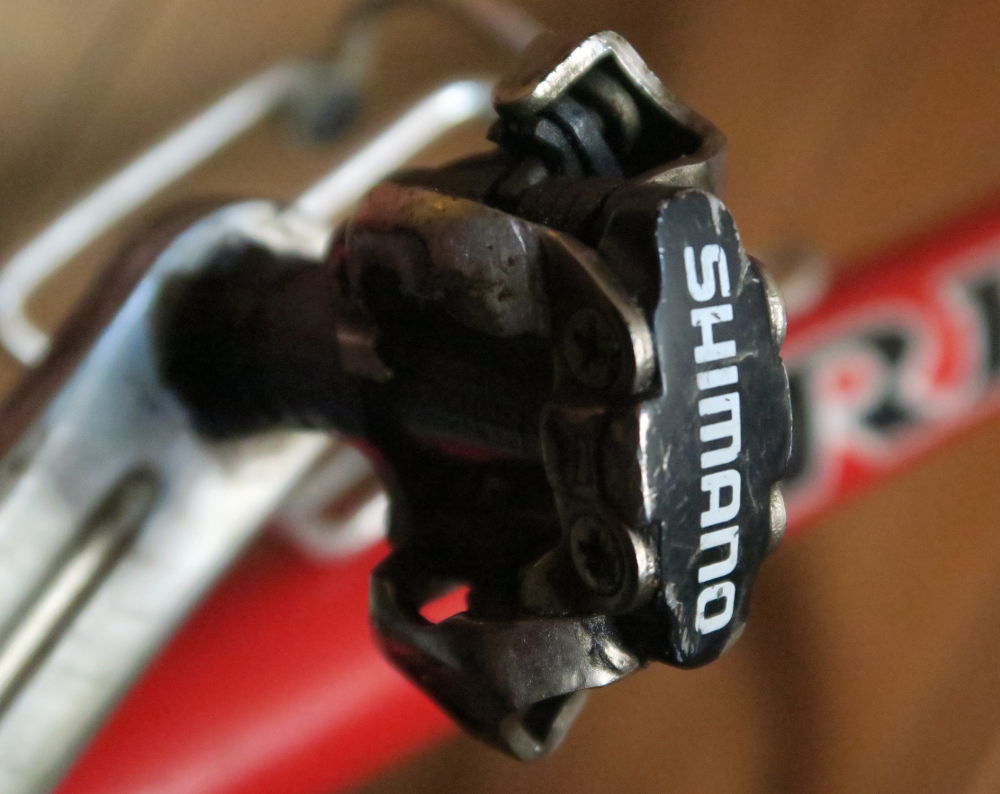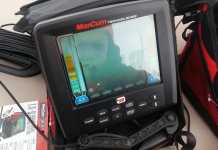 Questions: What are the best clipless pedals for beginners? Which clipless pedals are the easiest?
Questions: What are the best clipless pedals for beginners? Which clipless pedals are the easiest?
Many beginners find that mountain bike SPD clipless pedals are the best to use and get out of when learning the ropes.
Mountain bike SPDs are double-sided and have a locking mechanism on both sides, which makes them the easiest clipless pedals to get out of and in to.
You don’t have to flip the pedal over like toe clips or road bike step-in pedals. All you do is put your foot on the pedal, start pedaling, and click in. There’s little futzing with getting things lined up.
Also, clipless pedals can be made easier or harder to get out from by adjusting the locking mechanism.
SPDs use a recessed cleat system on the shoes. This makes it easy to walk around in, without any weird clicking or slipping.
Read customer reviews of the best clipless pedals in 2017 on Amazon.
The current batch of SPD shoes look like sneakers, which can be good if you are a commuter.
Shimano PD-520 SPD pedal
The Shimano PD-520 SPDs are what I use on my mountain bike and older road bike. These were my first clipless pedals. I have ridden these for 1,000s of miles between the two bikes.
The road bike is more of long distance gravel bike, with a rack on the back of it. (I use it for commuting and touring, as well.) The mountain bike is ridden on trails. The pedals have been ridden in regular weather and through mud and snow. In either case, I have never had issues with clipping in or out.
The tension is adjustable and can be set to low, which makes for easy clipping out if you are learning, as well.
Maintenance is low. I have never replaced the bearings in the pedals, and I have had one pair of the PD-520s almost 5 years. I do lube the cleat every once in a while, though.
Beyond the cleat lubrication, they just work. And that’s what I want — no futzing around!
By far, these are my favorite MTB SPDs for getting started with clipless pedals. The PD-520 are some of the best mountain bike clipless pedals for the money.
Pros:
- Adjustable tension
- Easy clip in, clip out
- Wide enough to use regular shoes in a pinch
- Dual-sided entry
- Works with mountain bike or road bike
- Inexpensive
Cons:
- Weight compared to Shimano’s PD-540 or road pedals
Shimano PD-M324 SPD Dual Platform Pedal
A dual-purpose pedal, which has a regular pedal on one side and a clipless pedal on the other, is an option. Many, many years ago when my brother wanted SPD pedals on his mountain bike, he wanted to be able to wear regular shoes when he rode the bike for commuting and the clipless pedals for riding off-road with me.
He bought a pedal like the Shimano PD-M324 dual platform pedal.
The benefits of a pedal like this is being able to use regular shoes or clipless. The drawback is size and weight. You are more able to catch the pedal on the ground if you lean hard into corners.
Also, you may have to flip the pedal each time you stop depending on what shoes you are wearing.
Pros
- Adjustable tension
- Easy clip in, clip out
- Can use regular shoes, clipless shoes
- Works with mountain bike or road bike
- Inexpensive
Cons:
- Size and weight
Shimano Ultegra road pedals
When I started biking, I started with a mountain bike, which is why I choose MTB SPDs. When I started road biking, I knew how to use clipless. But there was a small learning curve moving to road bike pedals. Although I have used a couple different sets of road bike pedals, I like Shimano the best.
The Shimano PD-6800 SPD-SL pedals are the descendant to the PD-6600, which I have and really like.
SPD-SL road-only pedals use the same click in or click out concept, but the pedals do not have as low adjustment tension as the PD-520s. The platform for road pedals is much wider and much more firm and stable for hard pedaling.
The only issue beginners face is the one-sided pedal. Although Shimano has engineered these so the clip in portion usually points up, they make take a partial rotation before cliping in. It can be tricky at first.
But if you have a road bike and want to learn clipless, consider road SPD-SL instead of MTB SPDs. I think the difference is huge and worth the slightly longer learning curve.
What are clipless bike pedals?
Clip-in pedals are a foot-retention system.
They use a special cycling shoe, which is stiffer than a normal sneaker, and has a cleat that’s bolted to the shoe’s sole.
The cleat clips into a locking mechanism on the pedals and holds the shoe in place while turning the cranks.
To step into the pedal, you just push the cleat on the bottom of your shoe forward on the pedal.
You’ll hear a clicking sound when it locks into place. To unclip, you have to twist your heel outward.
Benefits of clipless pedals for beginners
Control: This mechanical system provides a direct connection to your bike.
Some people like the man-machine connection, with the stable, secure, hard point connection.
It also keeps your feet from slipping off the pedals, which is especially important during low rpm, torque heavy spinning — i.e., climbing hills, sprinting, and mountain biking.
In these instances, cyclists benefit from pulling up on the upstroke, which may provide a little more efficiency.
Slipping off platforms is a surprise, which can be deadly for a commuter cyclist who rides with traffic.
The last thing he/she wants to do is slip off the pedals with cars buzzing beside them. That’s dangerous.
Although toe clips and straps can serve the same purpose as clipless, they are dangerous, too, because they are one-sided and require you to flip the pedal over.
Technique: Clipless can help improve your spinning technique, which means a smooth pedal stroke. Part of this is related to keeping your feet from slipping.
Shimano SPD clipless pedals are the easiest to use.
Efficiency: Your muscles work as a unit. When you move, you have a target muscle that does the bulk of the work. But that target muscle does not work alone. Synergistic and stabilizer muscles will help the target muscle.
Example: When you use platform pedals, your legs and feet have a lot of freedom to move from side to side and front to back because they are not securely attached.
Synergists and stabilizer muscles have to work slightly harder to keep the foot on the pedals.
With a foot retention system, synergistic and stabilizer muscles are still active. But their recruitment is not as prominent, which means a little extra energy is saved.
On a long bike ride, becoming more efficient is a good thing.
You do need to be realistic, though: You won’t be Lance Armstrong fast because of the upgrade.
Learning on clipless pedals
The learning curve with clipless pedals is not that bad. The key is a little practice before the inaugural ride with them.
The best way to practice is to put your bike against a wall. Hop on it and lean your shoulder against that wall for balance. Once you’re balanced, start clipping in and clip out until you’re comfortable doing it.
With a little time, the clip in and clip out procedure will become a reflex, which will be your saving grace when stopping and forgetting to unclip.
‘Should I get clipless pedals?’
I think good clipless pedals are worth the money.
I used platforms for a few months on my MTB and ended up with scars on my shins from my feet slipping off the platforms and whacking my legs. Swapping to SPDs solved this problem.
But I really like the connection to the bike. It’s easier to bunny-hop. It also makes cornering on my road bike a little safer: I don’t have to worry about slipping off the pedal while pushing on it around a bend.
Although I don’t know if clipless pedals are right for you, they are for me.
Find the best clipless pedals for beginners in 2017 on Amazon.
Originally posted 2023-01-06 02:49:31.


